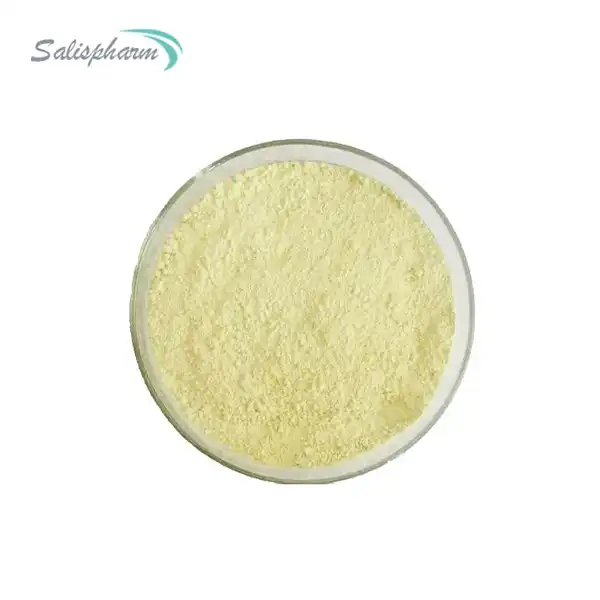Onivyde powder, a revolutionary cancer medication, is administered through a carefully controlled process to maximize its effectiveness in treating metastatic pancreatic adenocarcinoma. This liposomal formulation of irinotecan is designed to target cancer cells more efficiently by encapsulating the active drug in tiny fat particles called liposomes. The unique delivery mechanism allows Onivyde to accumulate in tumor tissue and release its contents slowly over time, enhancing its therapeutic impact while potentially reducing systemic side effects. Proper administration of Onivyde powder is crucial to ensure patients receive the full benefits of this innovative treatment. Healthcare providers must follow specific guidelines for dosing, preparation, and infusion to optimize outcomes and minimize risks associated with this potent chemotherapy agent.

What are the dosage guidelines for Onivyde?
Recommended Dosing Schedule
The recommended dosage of Onivyde powder is typically 70 mg/m2 administered by intravenous infusion over 90 minutes every two weeks. This dosing schedule is usually part of a combination regimen that includes fluorouracil and leucovorin. The precise dosage may be adjusted based on individual patient factors such as prior treatment history, overall health status, and tolerance to the medication. It's crucial for healthcare providers to carefully calculate the appropriate dose based on the patient's body surface area to ensure optimal therapeutic effect while minimizing potential toxicities associated with Onivyde powder administration.
Dose Modifications for Adverse Reactions
Dose modifications may be necessary if patients experience certain adverse reactions to Onivyde powder. For instance, in cases of severe neutropenia or other hematologic toxicities, the dosage might be reduced or the treatment temporarily suspended. Similarly, if a patient develops severe diarrhea or other gastrointestinal side effects, adjustments to the dosing regimen may be required. It's essential for healthcare providers to closely monitor patients receiving Onivyde powder and make prompt adjustments to the dosage as needed to manage side effects effectively while maintaining the treatment's efficacy.
Special Populations Considerations
Special considerations for Onivyde powder dosing are necessary for certain patient populations. For example, patients with hepatic impairment may require dose reductions due to the potential for increased drug exposure and toxicity. Additionally, elderly patients or those with a history of prior irinotecan-based therapy may need careful dose titration to balance efficacy and tolerability. The use of Onivyde powder in pregnant women or those who are breastfeeding is generally not recommended due to potential risks to the fetus or infant. Healthcare providers must thoroughly assess each patient's individual circumstances before initiating treatment with Onivyde powder to determine the most appropriate dosing strategy.
How should Onivyde be prepared for infusion?
Reconstitution Process
The reconstitution of Onivyde powder requires meticulous attention to detail to ensure the final product is safe and effective for administration. The process begins with adding a specific volume of 5% dextrose injection or 0.9% sodium chloride injection to the vial containing the Onivyde powder. It's crucial to use aseptic technique throughout the preparation to maintain sterility. The vial should be gently swirled to dissolve the powder completely, avoiding shaking or agitation that could damage the liposomal structure of the drug. The reconstituted solution should be inspected visually for any particulate matter or discoloration before proceeding to the dilution step.
Dilution and Final Preparation
After reconstitution, Onivyde powder must be further diluted before administration. The calculated dose of the reconstituted solution is withdrawn and added to an infusion bag containing either 5% dextrose injection or 0.9% sodium chloride injection. The final concentration of the diluted Onivyde solution should fall within a specific range to ensure proper drug delivery. It's important to mix the solution gently by inverting the bag several times, avoiding vigorous shaking. The prepared infusion should be used immediately or stored under refrigeration for a limited time, as specified in the product labeling. Proper labeling of the infusion bag with patient information and drug details is essential for patient safety.
Storage and Stability Considerations
Proper storage and handling of Onivyde powder and its prepared solutions are critical to maintaining the drug's stability and efficacy. The unopened vials of Onivyde powder should be stored under refrigeration and protected from light. Once reconstituted and diluted, the Onivyde infusion has a limited shelf life, even when stored in the refrigerator. It's crucial to adhere to the specified storage conditions and use-by times to ensure the drug remains stable and effective. Any unused portion of the reconstituted or diluted solution should be discarded according to institutional guidelines for cytotoxic waste disposal. Healthcare providers should be aware of these stability considerations to plan the preparation and administration of Onivyde powder efficiently.
What precautions should be taken during Onivyde administration?
Pre-medication and Monitoring
Before administering Onivyde powder, patients typically receive pre-medication to reduce the risk of infusion-related reactions and other potential side effects. This may include antiemetics, antidiarrheal agents, and corticosteroids. During the infusion, patients should be closely monitored for signs of allergic reactions or other adverse effects. Vital signs, including blood pressure, heart rate, and temperature, should be checked regularly throughout the administration process. Healthcare providers should be prepared to respond quickly to any signs of hypersensitivity or severe reactions. Additionally, regular blood tests to monitor hematologic parameters and liver function are essential for patients receiving Onivyde powder to detect any early signs of toxicity.
Infusion Site Management
Proper management of the infusion site is crucial when administering Onivyde powder. The infusion should be given through a central venous line or a peripherally inserted central catheter (PICC) to minimize the risk of extravasation and ensure accurate drug delivery. The infusion site should be monitored closely for any signs of irritation, redness, or swelling during and after the administration. If extravasation occurs, immediate steps should be taken to minimize tissue damage, following institutional protocols for managing chemotherapy extravasation. Patients should be educated about the importance of reporting any discomfort or changes at the infusion site promptly to their healthcare provider.
Patient Education and Follow-up Care
Comprehensive patient education is essential for those receiving Onivyde powder. Patients should be informed about potential side effects, including diarrhea, nausea, vomiting, and fatigue, and instructed on how to manage these symptoms at home. They should be provided with clear instructions on when to contact their healthcare provider if they experience severe or persistent side effects. Follow-up care after Onivyde administration typically includes regular appointments to assess treatment response, monitor for side effects, and adjust the treatment plan as needed. Patients should be encouraged to maintain good hydration, follow any dietary recommendations, and adhere to their medication schedule for optimal treatment outcomes with Onivyde powder.
Conclusion
Onivyde powder represents a significant advancement in the treatment of metastatic pancreatic adenocarcinoma, offering hope to patients with this challenging disease. Its unique liposomal formulation and targeted delivery mechanism provide enhanced efficacy while potentially reducing systemic toxicity. Proper administration, from precise dosing to careful preparation and infusion, is crucial for maximizing the benefits of this innovative therapy. By adhering to established guidelines and taking necessary precautions, healthcare providers can help ensure that patients receive the full potential of Onivyde powder in their cancer treatment journey.
At Xi'an Salis Biological Co., Ltd., we are committed to advancing the field of oncology through the development and production of high-quality APIs like Onivyde powder. Our state-of-the-art facilities and rigorous quality control measures ensure that we deliver products that meet the highest standards of safety and efficacy. For more information about our products and services, please contact us at lea_slsbio@163.com,WhatsApp+86 13193326505.

FAQ
Q: What type of cancer is Onivyde powder used to treat?
A: Onivyde powder is primarily used to treat metastatic pancreatic adenocarcinoma.
Q: How often is Onivyde powder administered?
A: Onivyde powder is typically administered every two weeks as part of a combination therapy regimen.
Q: Are there any special storage requirements for Onivyde powder?
A: Yes, Onivyde powder should be stored under refrigeration and protected from light.
Q: What are the most common side effects of Onivyde powder?
A: Common side effects include diarrhea, nausea, vomiting, and fatigue.
Q: Can Onivyde powder be used as a single agent for pancreatic cancer treatment?
A: No, Onivyde powder is not indicated as a single agent for the treatment of metastatic pancreatic adenocarcinoma.
References
1. Wang-Gillam, A., et al. (2016). Nanoliposomal irinotecan with fluorouracil and folinic acid in metastatic pancreatic cancer after previous gemcitabine-based therapy (NAPOLI-1): a global, randomised, open-label, phase 3 trial. The Lancet, 387(10018), 545-557.
2. Lamb, Y. N., & Scott, L. J. (2017). Liposomal Irinotecan: A Review in Metastatic Pancreatic Adenocarcinoma. Drugs, 77(7), 785-792.
3. Drummond, D. C., et al. (2006). Development of a highly active nanoliposomal irinotecan using a novel intraliposomal stabilization strategy. Cancer Research, 66(6), 3271-3277.
4. Ko, A. H., et al. (2013). A phase II randomized study of cetuximab and bevacizumab alone or in combination with gemcitabine as first-line therapy for metastatic pancreatic adenocarcinoma. Investigational New Drugs, 31(4), 974-982.
5. Kipps, E., et al. (2017). Understanding and managing toxicities of vascular endothelial growth factor (VEGF) inhibitors. European Journal of Cancer, 83, 258-275.
6. Kalra, A. V., et al. (2014). Preclinical activity of nanoliposomal irinotecan is governed by tumor deposition and intratumor prodrug conversion. Cancer Research, 74(23), 7003-7013.

